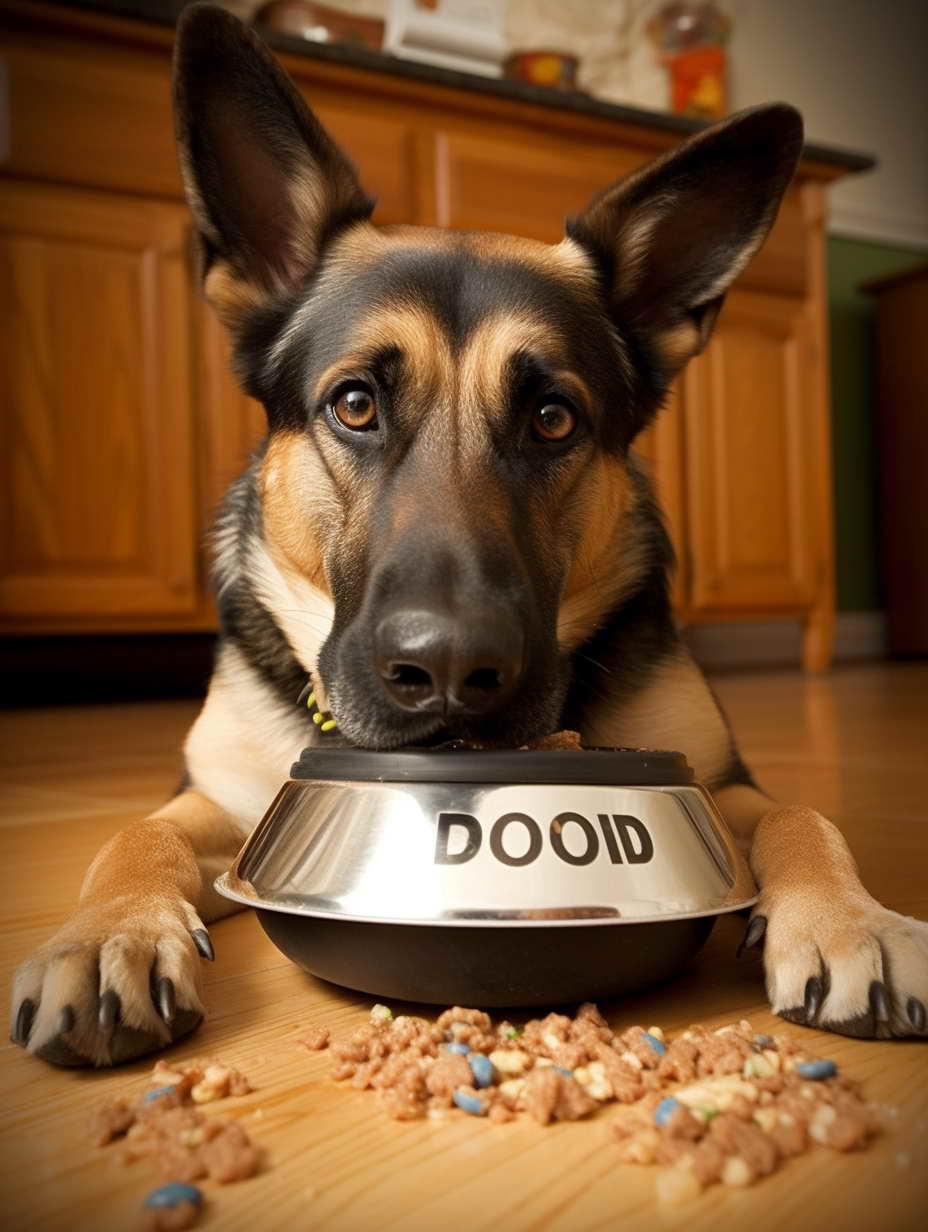Crude Fiber Dog Food Guide: Choosing the Best for Your Canine Companion
Introduction
When it comes to your beloved four-legged companion, their nutrition is paramount. A key aspect of your dog’s diet is crude fiber, which plays a significant role in maintaining their digestive health. In this Crude Fiber Dog Food Guide, we will delve deep into the world of crude fiber, helping you understand its importance, how to choose the best dog food, and answering common questions to ensure your pet’s well-being.
Crude Fiber Dog Food Guide: What You Need to Know
Understanding Crude Fiber
Crude fiber refers to the indigestible portion of plant-based foods in your dog’s diet. While it may not provide nutrients, it serves a crucial purpose in maintaining digestive health. Dogs, just like humans, require fiber for optimal digestion.
Why is Crude Fiber Important?
Crude fiber is a critical component of your dog’s diet, and understanding its importance can help you make informed choices for your furry friend’s well-being.
- Digestive Health: Crude fiber plays a pivotal role in maintaining your dog’s digestive health. It acts as a natural laxative, promoting regular bowel movements. This prevents constipation and ensures a healthy digestive tract for your pet. When your dog’s digestive system functions smoothly, they are less likely to experience discomfort and gastrointestinal issues.
- Weight Management: If you’re concerned about your dog’s weight, the inclusion of crude fiber in their diet can be a valuable tool. Fiber-rich foods tend to be less calorie-dense and can help your dog feel full with fewer calories. This can aid in weight management and prevent overeating, especially for dogs prone to obesity.
- Blood Sugar Regulation: Crude fiber also contributes to stabilizing blood sugar levels in your dog. This is particularly beneficial for dogs with diabetes or those at risk of developing the condition. Foods with the right amount of fiber can help regulate glucose absorption, preventing spikes and crashes in blood sugar levels.
- Healthy Gut Bacteria: Fiber serves as a source of nutrition for the beneficial bacteria in your dog’s gut. These microorganisms are crucial for maintaining a balanced and healthy gut microbiome. A thriving gut microbiome supports your dog’s overall well-being, as it can aid in nutrient absorption and bolster the immune system.
- Preventing Anal Gland Issues: Adequate crude fiber in your dog’s diet can help prevent common anal gland problems. When dogs have firm and regular bowel movements, the pressure exerted on their anal glands during defecation helps keep these glands healthy. This, in turn, reduces the likelihood of discomfort and the need for veterinary interventions.
Choosing the Right Crude Fiber Content
Selecting the appropriate crude fiber content for your dog’s diet is a critical step in ensuring their overall well-being. Here’s a closer look at how to make the right choice:
- Consider Your Dog’s Age and Activity Level: The crude fiber needs of a dog can vary depending on their age and activity level. Puppies, for example, may require a slightly different diet than senior dogs. Highly active dogs, such as working breeds or those that engage in vigorous exercise, may benefit from slightly higher fiber content to support their energy needs.
- Check the Label: When shopping for dog food, always check the label for information on crude fiber content. Look for brands that provide detailed nutritional information, including the percentage of crude fiber. This transparency allows you to make an informed decision based on your dog’s specific requirements.
- Moderation is Key: While fiber is essential for digestive health, it’s essential not to overdo it. Excessive fiber intake can lead to digestive issues, including diarrhea and excessive gas. Aim for a moderate amount, typically falling in the range of 2-5% crude fiber content in dry dog food. This range is generally suitable for most dogs.
- Consult with Your Veterinarian: Every dog is unique, and their dietary needs may vary. It’s always a good idea to consult with your veterinarian or a pet nutritionist to determine the right crude fiber content for your specific dog. They can consider your dog’s age, breed, size, and any specific health concerns to provide tailored dietary recommendations.
- Consider Fiber Sources: The source of fiber in your dog’s diet is also essential. Look for dog food that incorporates high-quality fiber sources. Whole grains like brown rice and oats, as well as vegetables like sweet potatoes, carrots, and peas, are excellent choices. These not only provide fiber but also offer additional nutritional benefits.
- Monitor Your Dog’s Reaction: When you make changes to your dog’s diet, it’s crucial to monitor their reaction. Pay attention to their bowel movements and overall well-being. If you notice any adverse effects, such as digestive upset, it may be necessary to adjust the crude fiber content in your diet.
- Transition Gradually: If you decide to switch your dog to a new food with a different crude fiber content, do so gradually. Gradual transitions over about a week can help prevent digestive upset and allow your dog’s system to adapt to the changes.
Best Crude Fiber Sources
Choosing the right sources of crude fiber in your dog’s diet is essential to ensure they receive not only the necessary fiber but also additional nutrients for their overall health. Here are some of the best crude fiber sources to consider:
- Whole Grains:
- Brown Rice: Brown rice is an excellent source of crude fiber. It provides not only fiber but also essential carbohydrates for energy. It’s easy to digest and suitable for dogs of all ages.
- Oats: Oats are another whole grain rich in fiber. They offer a variety of health benefits, including improved digestion and a steady release of energy. Oats are often well-tolerated by dogs with sensitive stomachs.
- Vegetables:
- Sweet Potatoes: Sweet potatoes are packed with fiber, vitamins, and minerals. They are a nutritious addition to your dog’s diet and can support digestive health. The natural sweetness also makes them a tasty treat.
- Carrots: Carrots are not only crunchy and satisfying for your dog to chew on but also provide a good amount of fiber. They are low in calories, making them an excellent choice for dogs watching their weight.
- Peas: Peas are a fiber-rich vegetable that can be found in many high-quality dog foods. They contribute both fiber and protein to your dog’s diet, promoting overall health.
- Fruits:
- Apples: Apples are a great source of fiber and antioxidants. They can aid in digestion and provide a refreshing crunch. Be sure to remove the seeds and core before feeding them to your dog, as these parts can be harmful.
- Blueberries: Blueberries are a fiber-rich fruit packed with vitamins and antioxidants. They can support your dog’s immune system and overall well-being.
- Legumes:
- Lentils: Lentils are legumes that offer a significant amount of fiber. They are often included in grain-free dog foods and provide a source of plant-based protein as well.
- Pumpkin:
- Canned Pumpkin: Canned pumpkin is an excellent source of soluble fiber, which can help with digestive issues such as diarrhea and constipation. It’s easy to mix into your dog’s food as a dietary supplement.
- Green Leafy Vegetables:
- Spinach and Kale: These leafy greens contain fiber and a range of vitamins and minerals. While they can be beneficial in moderation, it’s essential not to overfeed them, as they also contain oxalates, which can be harmful in large quantities.
- Bran:
- Wheat Bran: Wheat bran is rich in insoluble fiber and can be added to your dog’s diet in small amounts to promote regular bowel movements.
When selecting dog food or incorporating these fiber sources into homemade meals, consider your dog’s preferences and dietary needs. A balanced diet that includes a variety of these fiber-rich ingredients will not only provide the necessary crude fiber but also contribute to your dog’s overall health and well-being. Always consult with your veterinarian or a pet nutritionist for guidance on the best diet for your specific dog.

Common FAQs About Crude Fiber in Dog Food
How much crude fiber does my dog need?
The ideal amount varies by breed, size, and activity level, but a general guideline is 2-5% of crude fiber in their diet.
Can too much crude fiber be harmful to my dog?
Yes, excessive fiber intake can lead to digestive issues, so it’s crucial to find a balance.
Are there any side effects of a low-fiber diet for dogs?
Yes, a diet too low in fiber can lead to constipation and other digestive problems.
Can I add fiber to my dog’s diet through homemade meals?
Yes, homemade meals with fiber-rich ingredients like brown rice and vegetables can be a healthy addition.
What is the best way to transition my dog to a higher-fiber diet?
Gradually introduce the new food over a week to prevent digestive upset.
How do I know if my dog is having digestive issues related to crude fiber?
Watch for signs like diarrhea, constipation, or changes in bowel habits, and consult your veterinarian.
Conclusion
Your dog’s well-being depends on the right balance of nutrients, including crude fiber. By understanding its importance and making informed choices, you can ensure your furry friend enjoys optimal digestive health and overall vitality. Choose dog food with an appropriate crude fiber content, incorporate fiber-rich ingredients, and monitor your pet’s well-being closely. With this Crude Fiber Dog Food Guide, you’re on your way to providing the best for your loyal companion.


Leave a Reply